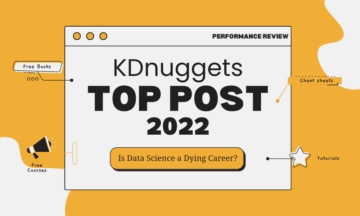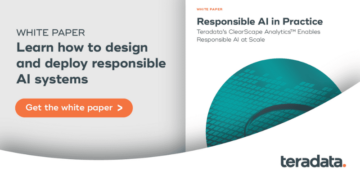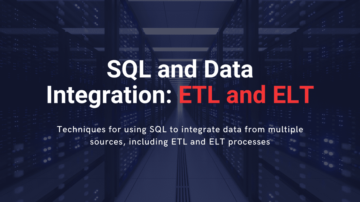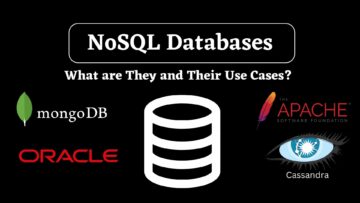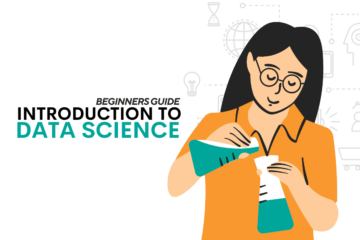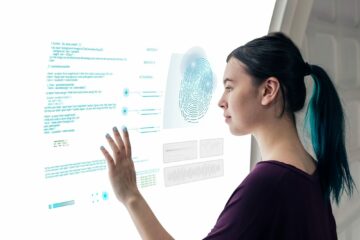
Of all the roles in the tech world, data scientists probably have the highest variation in titles and job responsibilities. A data scientist has to wear a lot of different hats, and the day-to-day work of a data scientist at Amazon could look significantly different from that of a data scientist at Microsoft. From finding areas of the company’s business that could benefit from collection, analysis, and understanding of data to deciding what strategic decisions must be made to improve customer satisfaction or purchase completion rates, a company can ask a lot of data scientists.
A data scientist is expected to have expert statistical, machine learning, and often economical skills and knowledge. A data scientist needs to be highly skilled in math, statistics, machine learning, visualizations, communication, and algorithm implementation.
Additionally, a data scientist must thoroughly understand the business applications of their data. If you’re analyzing tree growth data, you should understand the difference between height and height to crown base. This kind of contextual knowledge can be developed on the job, but it can be a big advantage if you already have experience working in the industry if you are looking to become a data scientist. If you’ve been a banker for five years, your odds of getting a data science position in fintech are much better than in healthcare.
The Varied Hats a Data Scientist Wears

Data science is a relatively new field, and it can be tough for people who aren’t data scientists to explain what data scientists do to laypeople. This leads to the sometimes comical variety of responsibilities and titles that can apply to a modern data scientist.
A data scientist, depending on the company and the specific job, can be responsible for data collection and cleaning. You could also be required to develop machine learning models and pipelines or serve your company as a visualization guru. Some data scientists are more internal-facing while others have a lot to do with internal, non-technical teams or even clients. If you work with less technical people, you’ll have to have stellar communication skills, both for writing reports to summarize your analyses as well as for presenting your findings and making recommendations for future action.
The key responsibility for a data scientist (or whatever your company calls someone who gathers, analyzes, visualizes, or predicts data) is to tell the story of the data. Where did it come from, what can we learn from it about the past and how can it guide us in the future? In order to do this successfully, you need to be a business area expert or have contextual knowledge to fit the pieces of the puzzle together and explain to those around you the significance of the data and the insights you have gained from it.
The exact responsibilities within the field of data science vary a lot, and there are a lot of different roles within the field of data science. Whether you’re looking to get into the field or you want to switch jobs, it’s really important that you keep an open mind in terms of job title and industry. I’ll give you a breakdown of the general responsibilities of thirteen different roles within the data science field.
Companies are generally not good at giving titles to people in data science, so it is important that you take this breakdown as a rule of thumb and not an exact definition. If one of these sounds perfect to you, then you can narrow your search down to that one title, but if several of them sound good, then I would be more flexible with the title you use when searching. (And if the title really matters to you, you can always make that part of your negotiation when you get the job offer!)
Any modern company of any significant size around the world has a data science department, and a data engineer at one company might have the same responsibilities as a marketing scientist at another company. Data science jobs are not well-labeled, so make sure to cast a wide net.
Breakdown of Data Scientist Responsibilities by Role

1. Data Analyst
A data analyst focuses more on data collection, cleaning, and aggregating. You must be able to comfortably navigate complex SQL queries. You will be responsible for designing and delivering reports to non-technical stakeholders. You’ll also get the chance to design data models, visualizations, and predictive models.
2. Database Administrator
Database administrators manage database instances, both on-premise and cloud instances. As a database administrator, you are expected to build, configure, and maintain production environments. You will also be responsible for the performance, availability, and security of the databases under your purview. Get ready to spearhead data operations and provide mission-critical on-call support.
3. Data Modeler
A data modeler creates conceptual, technical, logical and sometimes physical data models. You will have to decisively select and maintain data modeling and design standards to create a cohesive vision for your company’s data.
Data modelers must also develop entity relationship models and design databases. You may need to improve data collection and analysis of underrepresented classes of data for your team or company to ensure your data sets are representative.
4. Software Engineer
Software engineers design and maintain software systems. When you are a software engineer, get ready to write scalable, reliable, and performant code. You’ll have to translate design requirements into well-documented, well-tested code that brings the visions of the product designers to life.
5. Data Engineer
Identifying and resolving data quality challenges will be an important task for you as a data engineer. You will also need to support the ingestion of data sources into data storage solutions. An exciting part of a data engineer’s work is getting the chance to architect and design data engineering solutions. You should also be ready to build ETL pipelines to extract, transform and load data into data warehouses for downstream reporting. Data engineers are additionally responsible for data replication, extraction, loading, cleansing, and curating.
6. Data Architect
Data architects are mainly responsible for designing and maintaining data pipelines. Another important part of the work of a data architect is managing databases. As a data architect, you’ll write efficient queries and optimize existing ones to maximize scalability and cost-efficiency. You will also convert data into actionable reporting, automation, and insights.
7. Statistician
A statistician understands the business needs, develops hypotheses, and constructs statistically sound experiments. As a statistician, you will validate the statistical validity of other business groups’ experimental plans. You will also be expected to coach and train project or study directors to develop statistically reasonable experiments and validation strategies or metrics.
Beyond experiments, a statistician develops and executes analytical reporting strategies. You may need to act like a statistical cheerleader because some data science companies have their statisticians actively promote statistical methods and discover new business areas which could benefit from statistically sound analysis.
8. Business Intelligence Analyst
A business intelligence analyst is a bit on the softer side of data science. As a business intelligence analyst, you will need to collect business and functional requirements and work to align technical solutions with business strategies. You will also work on creating or discovering data procurement and processing strategies.
You will be responsible for extracting and manipulating large volumes of data to create analytical reports from it. Business intelligence analysts also report, present, and communicate analytical results to key stakeholders.
9. Marketing Scientist
Marketing scientists present ideas and findings to current and potential clients. They also apply data mining and analysis strategies to data, such as demographic or marketing data. According to Stone Alliance Group’s description of a marketing scientist, you must “track and evaluate customer acquisition efforts, market trends, and customer behavior.” A marketing scientist is a data scientist who specifically works on advertising, marketing, or user/customer demographic data.
10. Business Analyst
A business analyst “analyzes business and user needs, documents requirements, and designs the functional specifications for systems and reports,” as per MaxisIT Inc’s requirements. If you are a business analyst or want to become one, you need to understand business and industry requirements and use them to formulate system scope and technical objectives. You will also be responsible for defining interaction of data between different systems and databases.
11. Quantitative Analyst
Quantitative analysts develop complex models using large data sets to feed internal reports and produce business insights. Resource Development Associates has their quantitative analysts “develop and lead the implementation of analytic plans, outlining research methodology, questions, sampling, and iterating plans”. Quantitative analysts also automate workflows and work to validate data integrity.
12. Data Scientist
As a data scientist, you will be expected to extract, aggregate, clean, and transform data from multiple sources. You will need to identify important contextual factors for the problem. Data scientists analyze data to produce key actionable insights for the business to improve performance. Depending on the company, you may need to predict market trends to help the company strategically develop its branches.
Data science is about finding a balance between short-term analytical guidance and long-term forecasting and experiments. You need to communicate the important things at the right time, so it’s crucial you can present findings in digestible media – data visualizations and captivating, thoughtful presentations.
You, as a data scientist, will bring value and insights from the data to non-technical stakeholders. You will have the opportunity to proactively find areas within the company that could benefit from data-driven decisions and works with other teams to accomplish this.
13. Machine Learning Engineer
Building out machine learning models for production is the main focus of a machine learning engineer. They design and implement scalable, reliable, performant data pipelines and services. Depending on the company and its areas of focus, you could improve the personalization of products or better predict market trends in the industry by applying machine learning models to historic and live data.
The Roles and Responsibilities of Data Scientists Cross Over, but the Distinctions Still Matter
There is a lot of cross-over between all of these roles. Some are more focused on pure number-crunching while others focus more on applying the insights produced from data analysis to business decisions. Regardless of your exact job title, if you’re in the field of data science, you’ll be expected to be involved in a lot of different steps in the data-driven product development cycle. You should be ready to discover new areas to optimize, figure out the metrics that matter, find the data to inform these metrics, design and execute experiments, and present the results of experiments/models in concise, accurate, and convincing ways.
The data science field is young and loosely defined. A lot of times, you’ll find job descriptions under different job titles that sound surprisingly similar within the umbrella of data science. Companies often realize they have data or could collect data and then use it to improve their business model. However, these job descriptions and the job title they choose to assign to them are often written by non-technical people, meaning there is a lot of overlap.
A data engineer at one company might be doing the same work as a data analyst at another company. All of these positions touch on collecting or validating data, applying some form of analysis, and then explaining the results to non-technical colleagues, either through reports, predictions, or visualizations.
If one of these jobs sounds perfect to you, then you can narrow your search down to that one title, but if several of them sound good, then I would be more flexible with the title you use when searching. If the title is something that is really important to you, you can always make that part of your negotiation when you get the job offer. Don’t let this list of responsibilities scare you away from a job that sounds interesting. If you really want to become a data modeler, but you aren’t comfortable organizing the lineage information, you can look at data modeler positions at different companies or at data architect positions.
Let this breakdown of the thirteen most common data science roles springboard your search for a job in data science.
Nate Rosidi is a data scientist and in product strategy. He’s also an adjunct professor teaching analytics, and is the founder of StrataScratch, a platform helping data scientists prepare for their interviews with real interview questions from top companies. Connect with him on Twitter: StrataScratch or LinkedIn.
Source: https://www.kdnuggets.com/2022/01/deep-look-13-data-scientist-roles-responsibilities.html
- "
- About
- According
- acquisition
- Act
- Action
- ADvantage
- Advertising
- algorithm
- All
- Alliance
- already
- analysis
- analyst
- analytics
- applications
- AREA
- around
- Automation
- availability
- Bit
- branches
- build
- business
- Business Applications
- business intelligence
- business model
- challenges
- CIO
- Cleaning
- clients
- Cloud
- code
- Collecting
- collection
- Common
- Communication
- Companies
- company
- complex
- could
- Coursera
- Creating
- Current
- Customer satisfaction
- data
- data analysis
- data mining
- data quality
- data science
- data scientist
- data storage
- data warehouses
- Database
- databases
- delivering
- demographic
- Design
- designing
- develop
- Development
- DID
- different
- discover
- documents
- engineer
- Engineering
- Engineers
- experience
- extraction
- Figure
- fintech
- fit
- Focus
- form
- founder
- future
- General
- getting
- good
- Growth
- guide
- healthcare
- help
- How
- HTTPS
- identify
- implement
- important
- industry
- information
- insights
- Intelligence
- interaction
- Interview
- Interviews
- involved
- IT
- Job
- Jobs
- Key
- knowledge
- large
- lead
- LEARN
- learning
- List
- load
- looking
- machine learning
- Making
- Market
- Market Trends
- Marketing
- math
- Matter
- Matters
- Media
- Metrics
- mind
- Mining
- model
- modeling
- more
- net
- offer
- open
- Operations
- Opportunity
- order
- organizing
- Other
- Others
- People
- performance
- personalization
- physical
- platform
- potential clients
- Predictions
- present
- Presentations
- Problem
- Produced
- Product
- product development
- Production
- Products
- project
- promote
- provide
- purchase
- puzzle
- quality
- quantitative
- Rates
- report
- Reports
- Requirements
- research
- Results
- satisfaction
- Scalability
- Science
- scientists
- Search
- security
- Services
- similar
- Size
- skills
- So
- Software
- Software Engineer
- Solutions
- Someone
- something
- specifically
- SQL
- standards
- statistics
- storage
- Strategic
- Strategy
- Study
- support
- Switch
- system
- Systems
- Teaching
- tech
- Technical
- The Future
- the world
- Through
- time
- together
- top
- touch
- Transform
- Trends
- UN
- us
- value
- vision
- visualization
- What
- WHO
- within
- Work
- working
- works
- world
- would
- writing
- years

